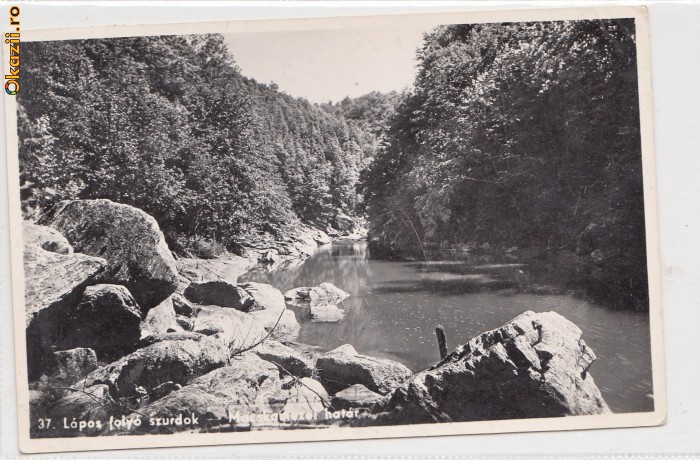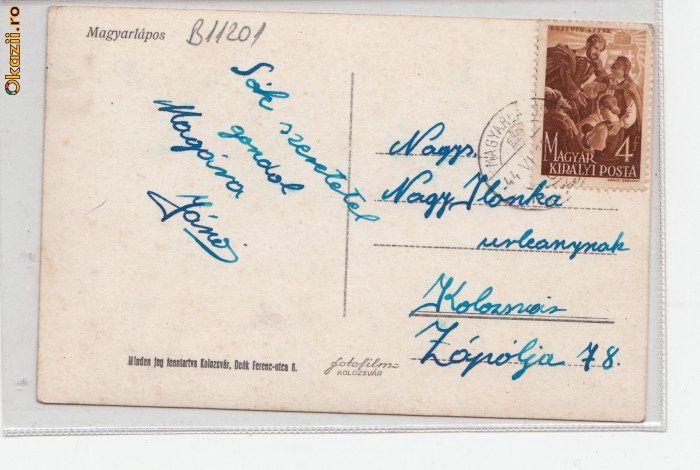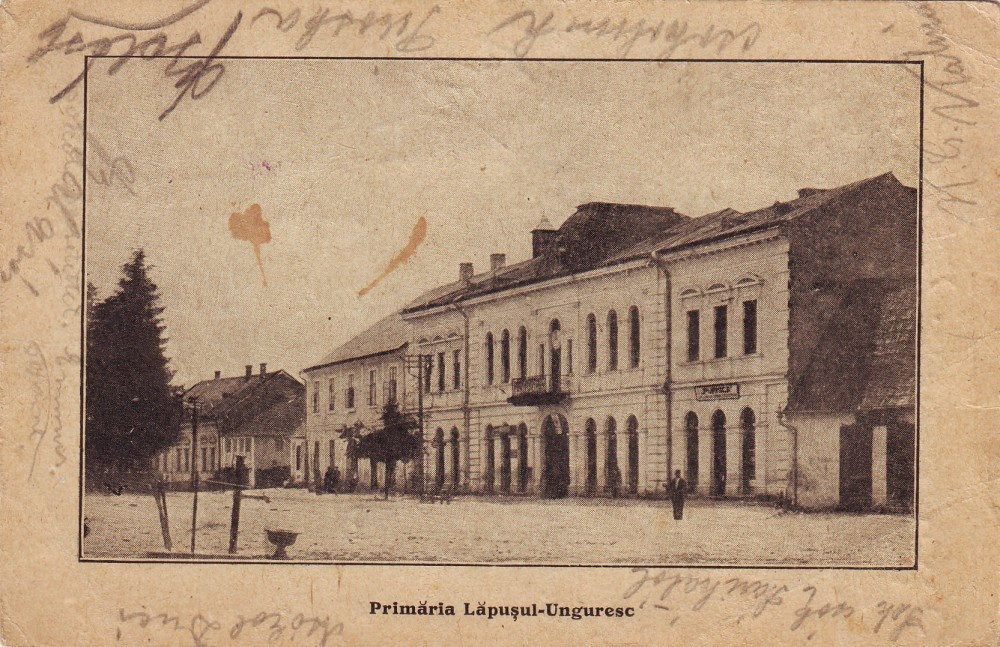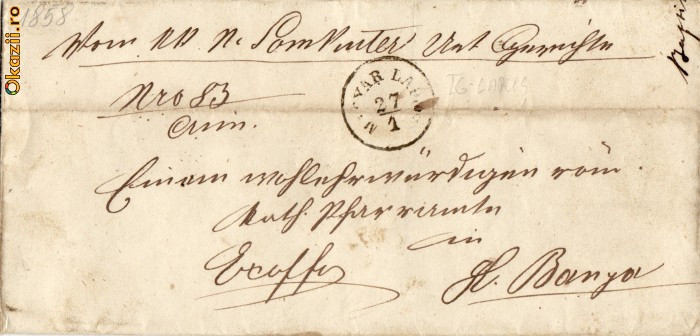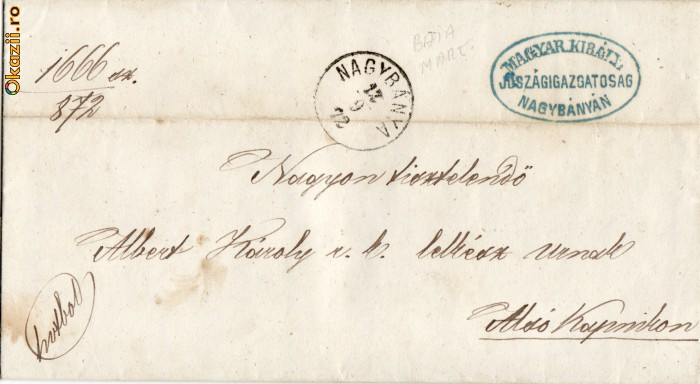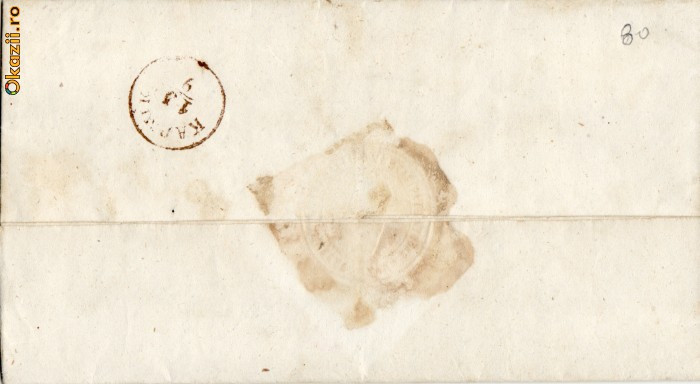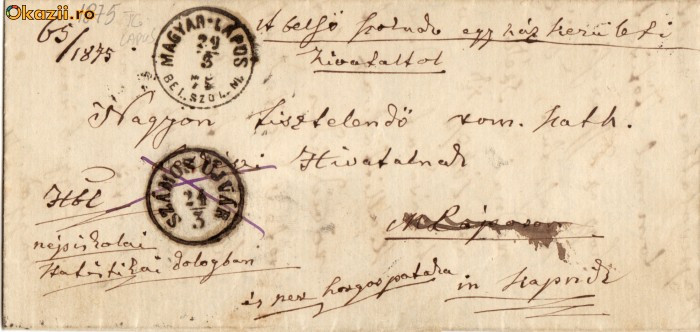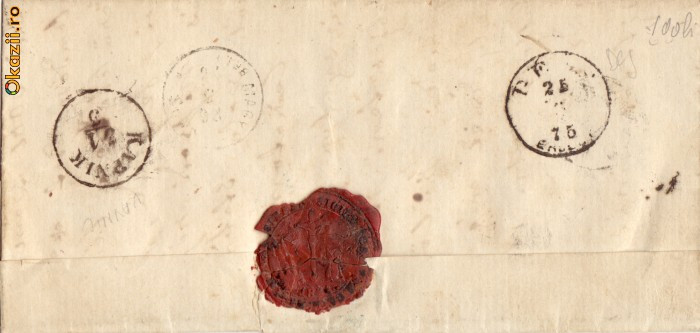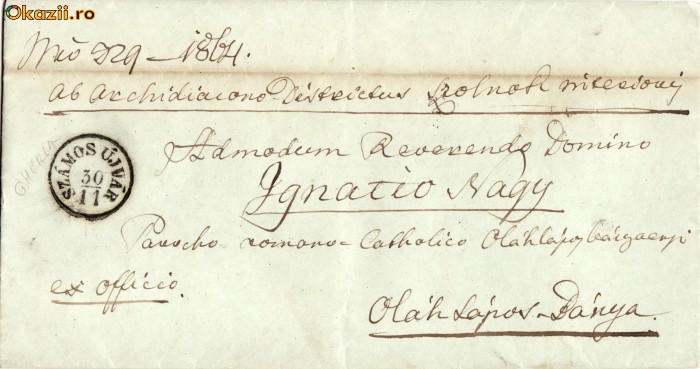|
Livia Diaconescu and Clara Filderman
-
Country
name at time of photo:
Romania
Country
name today:
Romania
This photo was taken in a studio in Focsani, probably in 1934. From right to left: Clara Filderman, my sister, already
wearing silk stockings and a young lady's outfit; and I, who still needed to stand on a chair for pictures. I had very curly
hair that wouldn't stay straight, no matter how hard my mother tried, so it would be cut very short. I wore a beige dress
with a little string and folds, stockings with patterns for children and 'Dermata' leather shoes with buckles (a brand that
was en vogue at the time).
My sister, Clara, was six years older than me. She was born in Focsani, in 1922. When she was eleven, they realized she
had diabetes. After the disease was diagnosed, they took her to the clinic, but an assistant told them to take her to Vienna.
In those times, at the beginning of the 1930s, getting a passport wasn't a problem; generally speaking, money wasn't a problem
either. They went to a sanatorium there and the doctors managed, through diet, to bring her to the minimum risk level. They
also gave her a book on how she had to be nursed - she had to use scales to portion her food. There was a time when she had
to weigh her cherries and, to get another portion, she also added the weight of the pits. My mother cooked specially for her.
Clara had to measure her glycosuria twice a day using a solution, she dosed the insulin on her own and injected it in her
leg by herself - she did that from the age of eleven to 22.
I was born in October 1928, in Focsani. I studied at the Jewish School in the first three grades. I did my homework by
myself and I never thought of asking for help. I remember Mrs. Weber, a very good teacher, Mrs. Leslean from Falticeni, and
Mrs. Vigder. Towards the end of the school year, I usually caught some contagious disease and could not attend the festivities
marking the end of the school year. In the 4th elementary grade, they transferred me to the Romanian school, the School no.1
for girls, which was very close to home. One day, during the break, I was summoned to the entrance gate - my former mates
from the Jewish School, Suzy Leibovici and Felicia Marcus, had come to ask me if I wouldn't return there. I didn't go back
- even if I had wanted to, the decision had already been made. It was pretty hard at the beginning, but I had a tutor and
I caught up fast. I enjoyed everything I studied in the 4th. I was good at math; I liked Romanian and physical education.
I had heard there would be some exams at the end of the year and I was terrified because I wondered whether I would remember
anything I had learnt. One of my teachers at the School no.1 for girls was Mrs. Popescu. Her husband was the headmaster of
the School no.1 for boys; they were very nice people.
I had both Jewish and Romanian friends. My mother thought I wasn't old enough to go see my schoolmates, Suzy Leibovici
or Felicia Marcus, by myself - they didn't live far from the end of Cotesti Street - and so I made friends with Romanian girls.
My mother began to teach me French. Then my sister took care of me. My mother would have me memorize fables by La Fontaine,
fragments from Corneille's Cid and Racine's Athalie. She would constantly check on me - there was no escape from that. Before
school started, she made me study the history and geography lessons. I felt frustrated then, but now, when I look back, I
realize what she did was right.
Lazar Filderman
-
Year when photo
was taken:
1911
Country
name at time of photo:
Romania
Country
name today:
Romania
This is Lazar Filderman, my father, at the age of 21. The photo was taken in August 1911, as indicated on its back. I don't
know where it was taken. My father was a bachelor then and was in the grain business. I don't know too much about his family
or his childhood.
My father, who was born in 1890, was very bright, but lazy, and it was with great pains that he completed four years of
high school. He didn't want to go any further with his education. He later regretted this very much, for he was very fond
of reading and listening to heavy [classical] music. He spoke French and German. While he was serving in the army, during
World War I, they wanted to send him to a military academy, but he considered it pointless. When he returned from the war,
he went to work for his cousin in Bacau. Then he left for Constanta, where he took up the grain trade.
My father came to Focsani in the 1920s. He married my mother, Fanny Filderman, nee Finkelstein, both religiously, in front
of a rabbi, and civilly. I don't know more about this, since my parents didn't talk about this period.
Since the minute I saw the light of day, I remember my father being a community man. He was tall, had a stately appearance
and made himself noticed everywhere. He was severe by nature and very intelligent. He cared a lot about the Jewish community
and he held many offices
Rebeca Reichmann and family
-
Photo taken in:
Bucuresti
Year when photo
was taken:
1916
Country
name at time of photo:
Romania
Country
name today:
Romania
This photo was taken in Bucharest, in 1916. This is Rebeca Reichmann, my father Lazar Filderman's sister, with her husband
and their first-born child, Rudolf Reichmann.
Rebeca married a certain Reichmann, who worked with Leon Filderman in the oil business, but he wasn't an engineer - he
did something in the administration. They had two children: Rudolf and Edmond.
Rudolf Reichmann went to the Commercial Academy and married the daughter of a fervent communist. Her name was Sofia-Angela.
He had met her before the war, in college. She had been baptized before the war, but she had to return to the religion she
had been born into, whether she wanted it or not. They didn't have children.
Edmond Reichmann went to study industrial chemistry, but only graduated after World War II because he had to register again.
He worked at the Ministry of Paper and Wood - I don't know the exact name - and was a manager at the Cellulose Institute.
He got married, but he didn't have children.
Lazar Filderman
-
Year when photo
was taken:
1914
Country
name at time of photo:
Romania
Country
name today:
Romania
This picture shows Lazar Filderman, my father, in a garden. He was wearing a casual outfit. The photo was taken in July
1914, before the war and his marriage. I don't know in what town it was taken.
My father, who was born in 1890, was very bright, but lazy, and it was with great pains that he completed four years of
high school. He didn't want to go any further with his education. He later regretted this very much, for he was very fond
of reading and listening to heavy [classical] music. He spoke French and German. While he was serving in the army, during
World War I, they wanted to send him to a military academy, but he considered it pointless. When he returned from the war,
he went to work for his cousin in Bacau. Then he left for Constanta, where he took up the grain trade.
My father came to Focsani in the 1920s. He married my mother, Fanny Filderman, nee Finkelstein, both religiously, in front
of a rabbi, and civilly. I don't know more about this, since my parents didn't talk about this period.
Since the minute I saw the light of day, I remember my father being a community man. He was tall, had a stately appearance
and made himself noticed everywhere. He was severe by nature and very intelligent. He cared a lot about the Jewish community
and he held many offices.
Dankó Imre
laposkötél-szövő: → szövőtábla
Lápos mente: a Szamosba ömlő Lápos folyó felső völgye É-Erdélyben. Nagyobb magyarlakta
falvai Magyarlápos és Domokos. – Irod.
Gunda Béla: Telekformák, települések és a gazdálkodás kapcsolata a Lápos felső völgyében (Föld. Közl., 1941).
Kósa László
laposöltés: két pontot összekötő egyenes sima öltés; egyik ponton tűvel az anyag színére
felszúrnak s egy másik ponton az anyag visszájára leöltenek. Különféle változatait az öltések iránya és egymáshoz való helyezkedése
szabja meg, valamint az, hogy szálszámolás után varrták-e vagy sem. Van ferde, átlós (diagonális)
laposöltés, egyenes
laposöltés és egymásba nyúló laposöltés. – Irod. Ferencz Kornélia és Palotay Gertrúd: Hímzőmesterség (Bp., 1940); Boser, R.–Müller, I.: Stickerei
(Basel, 1969).
Népviselet (1950-es évek, Domokos, v. Szolnok-Doboka m.)
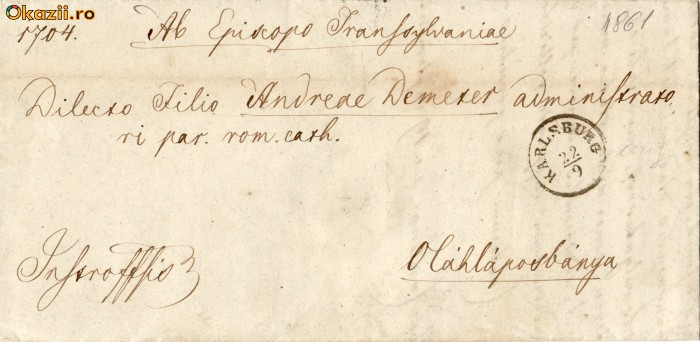
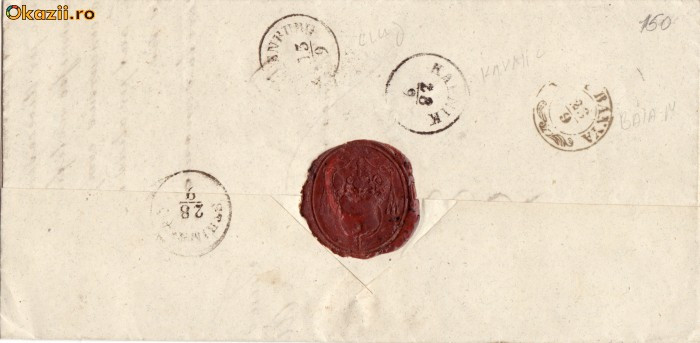
SCRISOARE 1858 TARGU-LAPUS
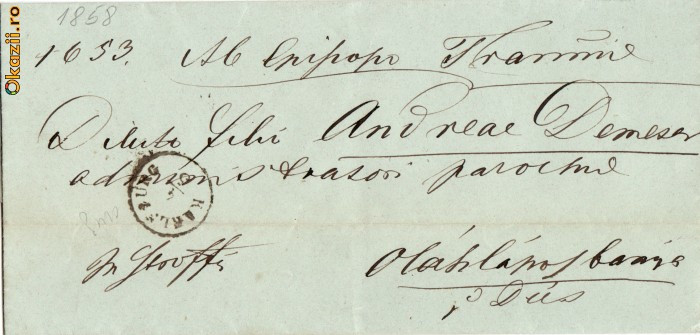
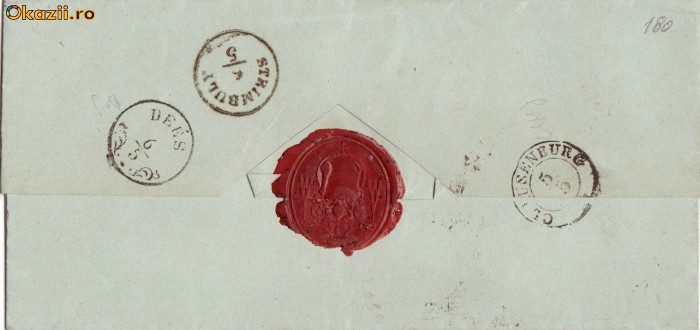
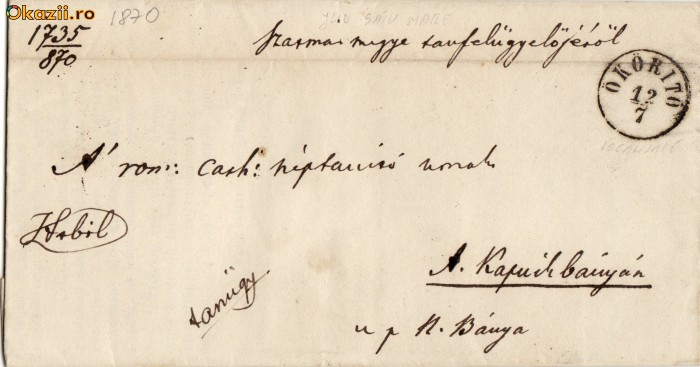
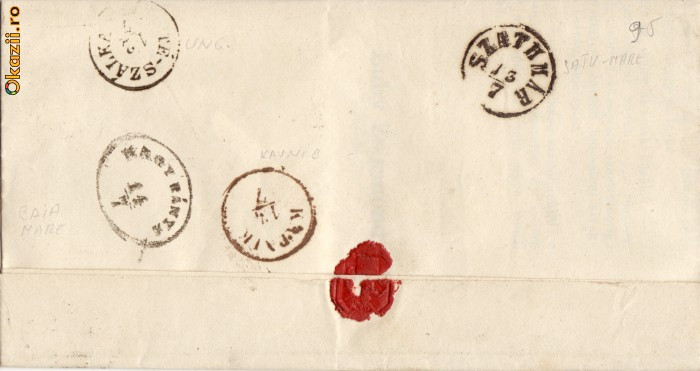
SCRISOARE SEC 19 OKORITO 1870
SCRISOARE SEC, 19 BAIA MARE1872
SCRISOARE
VECHE 1864 GHERLA
|

